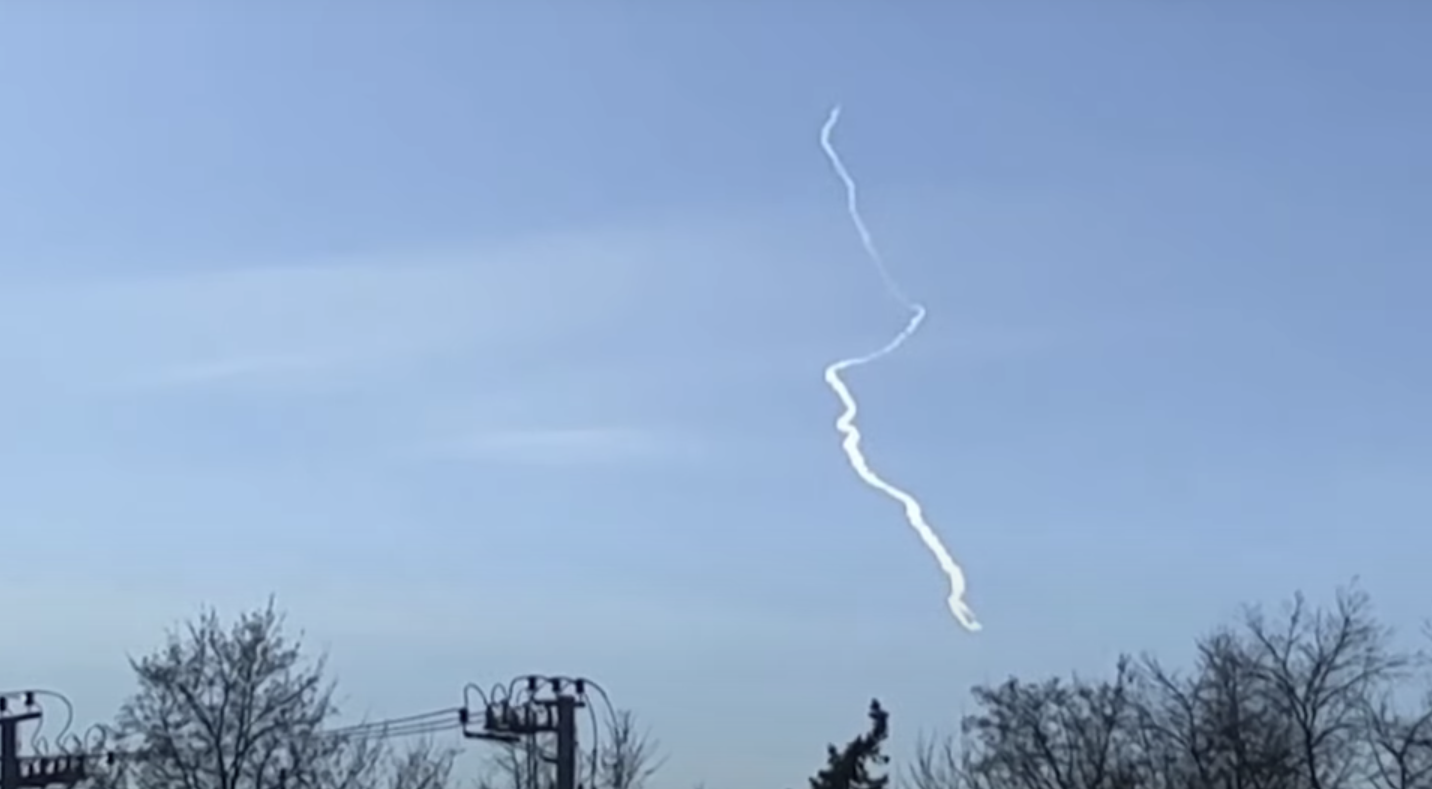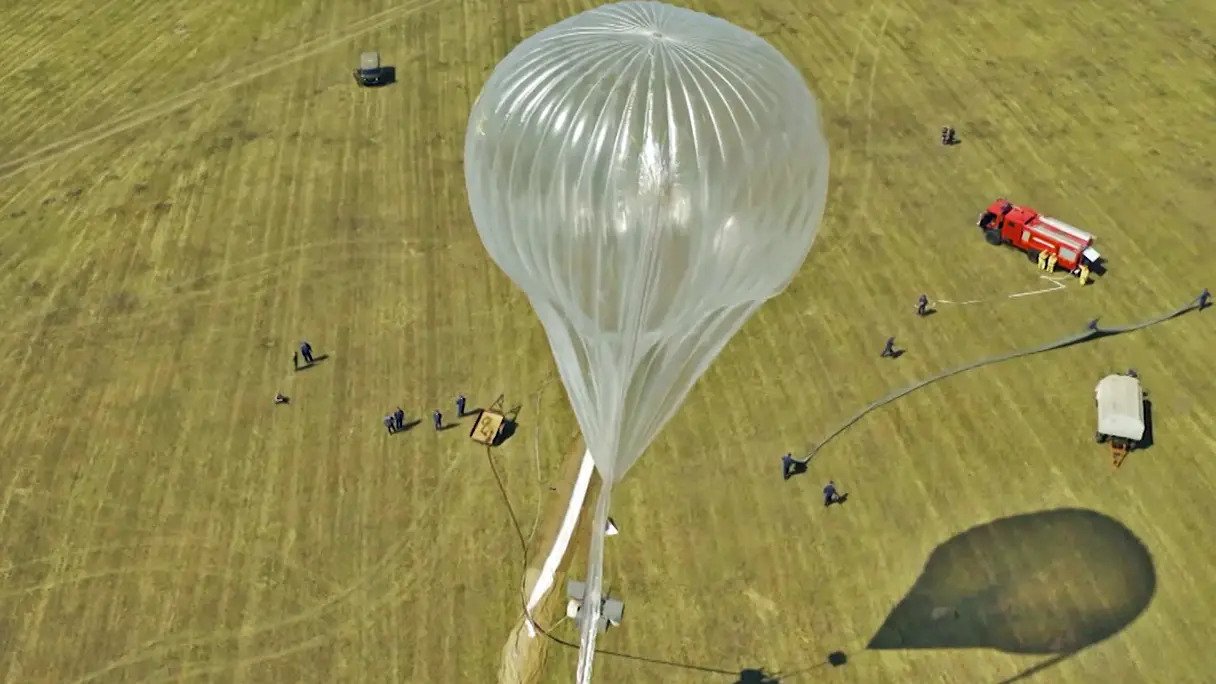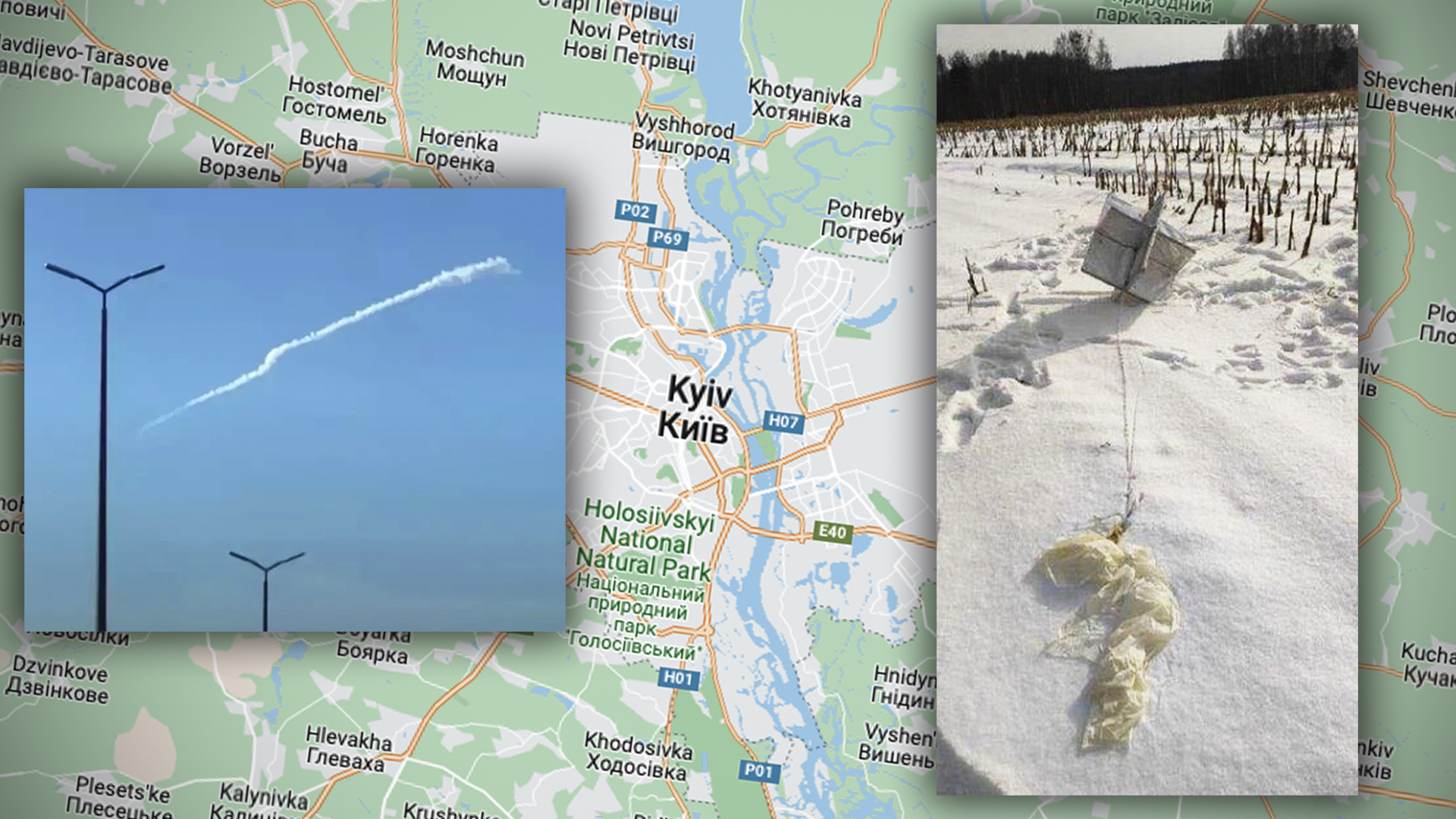Ukrainian armed forces shot down several balloons with radar reflectors suspended beneath them that were spotted flying over or near the capital Kyiv on Wednesday, according to officials in that country. This appears to be an emerging Russian tactic that could be used to gather intelligence about Ukraine’s air defense capabilities, baiting them into wasting precious ammunition and other resources, or otherwise distracting or confusing their operators.
This follows other recent balloon or possibly balloon-related incidents in Ukraine, as well as neighboring Moldova and Romania, as you can read more about here. Modern military use of balloons, in general, has also become a major subject of international discussion after a series of recent shootdowns over the United States and Canada. There are no indications that these European incidents are directly related to the ones in North America.

“About 6 enemy air targets were detected in the airspace of Kyiv” and were later determined to be “balloons that move under the influence of the wind,” according to a post on the Kyiv City Military Administration’s (KCMA) channel on the Telegram social media network. “These objects could carry corner reflectors and certain intelligence equipment. Air defense equipment worked on all air targets. Most of these probes were shot down. The purpose of launching the [balloons] was possibly to detect and exhaust our anti-aircraft defense.”
A “final determination of the type and characteristics of the aircraft and their equipment will be made after a detailed study and analysis of the remains of the downed objects,” according to KCMA.

Ukrainian Maj. Gen. Kyrylo Budanov, head of Ukraine’s Defense Intelligence directorate, or GUR, told The War Zone Wednesday that it is unknown at the moment exactly how many balloons were shot down or their origin.
The balloons do not represent an innovation of any kind, Ukrainian Air Force spokesman Col. Yuri Ignat stressed on Ukrainian national television Wednesday.
“Those are methods that have been in use for a long time already and are outdated,” Ignat said. “It’s just a normal ballon, 1.5 meters [just under 5 feet] wide but the size can differ though. It’s filled with gas and flies up.”
The balloons have “a corner reflector…tied to it, and a radio localization station can receive its signal that’s then reflected by the device,” said Ignat, using another term commonly used to describe radar reflectors. “That means it’s an air target and we need to apply our air defense capabilities.”
“The enemy wants us to use our force and means, our air defense missiles, against those balloons and their reflectors,” he said. “They are the essential element [of our air defense system], they defend our critical infrastructure and other critical objects.”
Ukrainian troops on combat duty “monitor the situation 24 hours a day, not only in Ukraine’s air space, but also far beyond.”

Of course, while their underlying technology may be dated, that does not mean these balloons can’t be useful to Russia. The Russians, and the Soviets before them, have a long history of using balloons for surveillance and other purposes, which you can read all about in The War Zone‘s recent deep dive into the subject.

Small balloons with radar reflectors represent a low-cost, expendable tool that could be used to trigger Ukrainian air defense sensors and, as Ignat himself noted, prompt a more active response.
Simply getting an opponent’s air defense radars to activate can provide valuable information about their capabilities and the basic disposition of those assets, which can then used to target or just avoid them. There is a clear historical precedent for doing exactly this with balloons fitted with radar reflectors.
From what we now know of a U.S. Cold War-era program called Project Palladium, which sought to glean information about Soviet air defense capabilities in Cuba, different sized reflectors can be used to gauge what certain radars can and cannot detect, as you can learn more about here. Similar, as well as more advanced tactics are very possibly being or have been used against the U.S. military in recent years, as The War Zone has laid out in detail
If air defenders then move to engage the balloons, as they did in response to the ones over Kyiv today, this puts additional strains on those forces. If Ukrainian forces downed all six reported balloons, that would have required expending at least six munitions. Ukraine’s military already has to contend with limited supplies of various air defense munitions after nearly a year of regularly engaging Russian missiles, drones, and fixed- and rotary-wing aircraft.
On top of all of this, the balloons can simply draw attention away from other areas and otherwise make it difficult for air defenders to effectively prioritize the responses. Ukrainian authorities have documented what looks to be a somewhat similar use by Russian forces of “denuclearized” Kh-55 cruise missiles loaded with inert ballast rather than any kind of warhead as apparent decoys, which you can read more about here.
The balloons over Kyiv may well be part of a growing trend. As already noted, there has already been one other recent instance of apparent Russian balloons with corner reflectors being used in Ukraine. On February 12, Ukrainian forces in the eastern Dnipropetrovsk region engaged similar-sounding balloons, according to a post on the official Ukrainian Air Force Facebook page. It’s unclear how many of those balloons, if any, were shot down.
In addition, while there is no hard evidence as of yet that the possible balloons over Moldova and Romania were Russian in origin, those incidents are certainly curiously coincidental. That all came just days after separate claims that Russian cruise missiles had passed through or at least near the airspace of those countries.
Russia’s use of corner reflectors as low-tech decoys is relatively expansive and well documented. The country has deployed various arrangements of these metallic objects around key targets, especially bridges, in and near Ukraine in an attempt to disrupt attacks that rely on radar guidance or intelligence. You can read all about these tactics here.
All told, Russian forces employing balloons like this makes sense on a number of levels and it is very possible that they could become an increasingly common sight in Ukrainian skies.
Contact the author. howard@thewarzone.com
